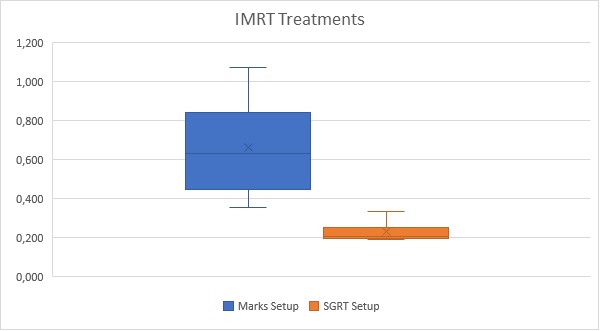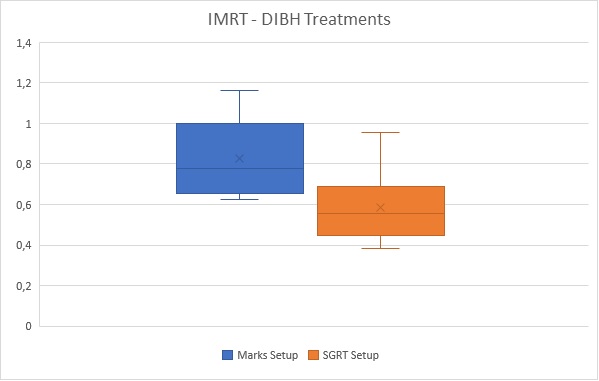SGRT for whole breast radiotherapy treatments: accuracy compared to conventional tattoo method
PO-2250
Abstract
SGRT for whole breast radiotherapy treatments: accuracy compared to conventional tattoo method
Authors: Carmelo Marino1, Cinzia Gigliuto2, Elisa Bonanno1, Giuseppina Borzì1, Nina Cavalli1, Andrea Girlando3, Anna Maria Gueli4, Martina Pace1, Giuseppe Stella4, Lucia Zirone1
1Humanitas Istituto Clinico Catanese, Medical Physics Department, Misterbianco (CT), Italy; 2University of Catania, School of Medical Physics, Catania, Italy; 3Humanitas Istituto Clinico Catanese, Radiotherapy Department, Misterbianco (CT), Italy; 4University of Catania, Physics and Astronomy E. Majorana, Catania, Italy
Show Affiliations
Hide Affiliations
Purpose or Objective
SGRT systems allow to verify patients positioning before and during radiation treatments; our study compares the magnitude of patients shifts applied using IGRT for whole breast treatments before and after SGRT systems installation.
Material and Methods
In October 2021, Humanitas ICC Radiotherapy department was provided by SGRT systems for all available TrueBeam machines and after the training time we started with tatooless approach for all breast treatments. In order to evaluate the expected benefit of using a large surface with SGRT instead of the traditional skin 3 marked points, we compared the magnitude of applied shifts obtained using IGRT for a total of 30 patients (20 IMRT, 10 IMRT-DIBH) positioned using skin marks and 30 patients (20 IMRT, 10 IMRT-DIBH) positioned using the SGRT system (AlignRT - VisionRT, London, UK).
Results
The magnitude of applied shifts was evaluated from 960 treatment fractions. Daily setup errors were given as absolute displacements from IGRT verifications both for conventional approach (using skin marks setup) and tatooless approach (using SGRT setup); mean absolute shifts values related to the conventional skin marks setup approach and IGRT were compared with mean absolute shifts values obtained using the surface-based imaging system and IGRT. Averaged over all patients, the mean absolute applied shifts (Figure 1) was 6.59 ± 2.2 mm for 20 IMRT treatments using skin marks setup and 2.32 ± 0.4 mm for the same number of IMRT treatments using SGRT setup (tatooless approach); in the same way, the mean absolute applied shifts (Figure 2) was 8.3 ± 2.1 mm for 10 IMRT-DIBH treatments using skin marks setup and 5.86 ± 2.0 mm for the same number of IMRT-DIBH treatments using SGRT setup.


Conclusion
Daily alignment with 3D surface imaging was found to be very useful for reducing setup errors when comparing with patient alignment from skin marks; our next step is to reduce the frequency of routine IGRT.